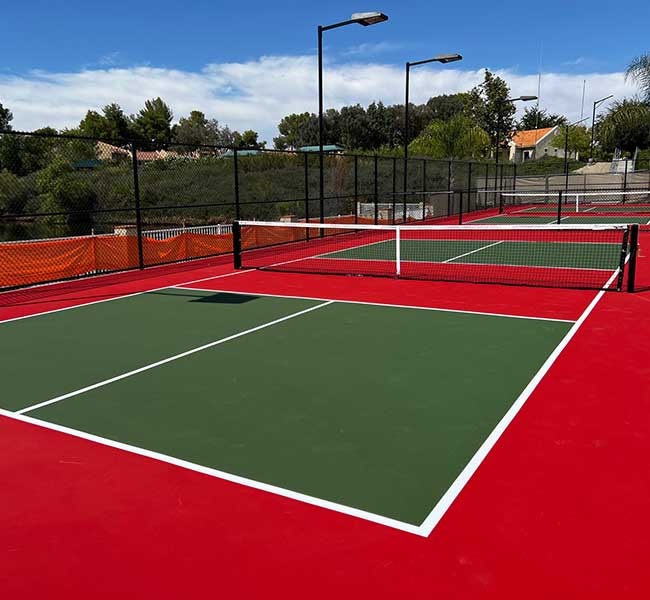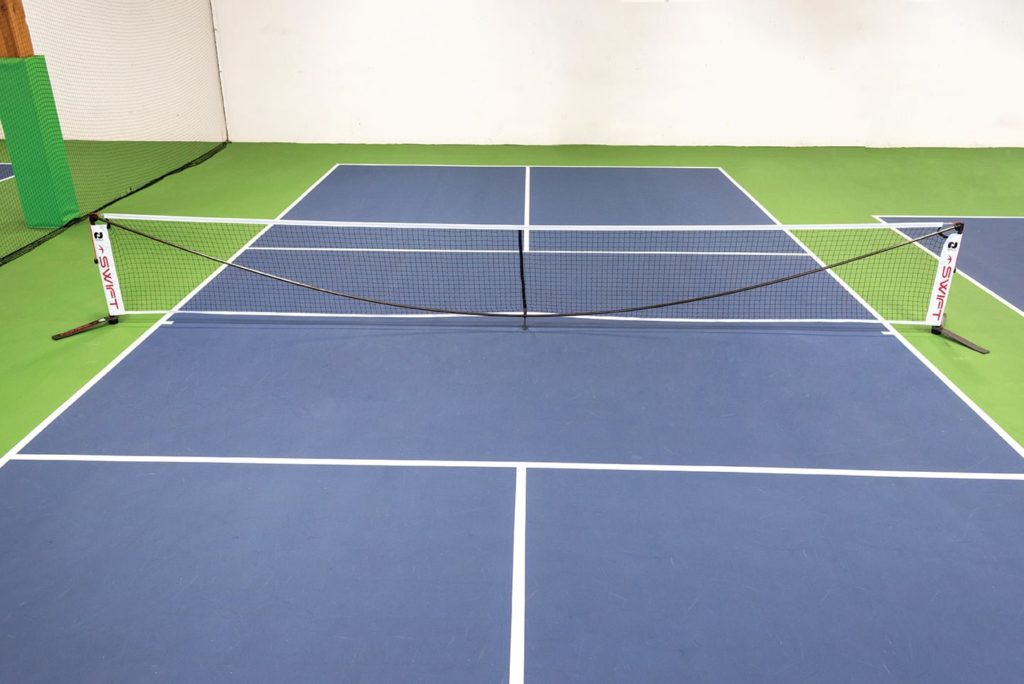Lasting Practices in Pickleball Court Building And Construction You Should Know
As the popularity of pickleball remains to increase, so as well does the demand for sustainable methods in court building. This technique not only addresses ecological concerns but also improves the durability and functionality of the courts. From choosing eco-friendly materials to applying reliable drainage and energy-saving lights solutions, there are various methods to take into consideration. Yet, the effect of these practices expands much beyond the court itself. Comprehending exactly how each aspect adds to a more sustainable future welcomes even more exploration right into the intricate balance in between recreational growth and ecological stewardship.
Picking Eco-Friendly Materials
Selecting green products is a crucial action in the building and construction of sustainable pickleball courts. The option of sustainable materials not only minimizes ecological effect yet additionally improves the durability and performance of the court. Key products consist of reused rubber for the surface area, which uses superb durability and shock absorption while diverting waste from land fills.
Additionally, making use of in your area sourced products decreases transportation discharges and supports regional economies. Pickleball court construction. As an example, using indigenous hardwoods for fencing and seats can offer a sustainable visual while making sure durability against the components.
Integrating absorptive materials for court foundations can even more contribute to sustainability by enabling all-natural water drainage and reducing overflow. These options not only safeguard neighborhood environments but also promote healthier play atmospheres.
Effective Water Drainage Solutions
While the choice of eco-friendly materials is necessary, applying effective drain remedies is just as important for preserving sustainable pickleball courts. Correct drain not just protects the court surface from water damages but likewise lessens disintegration and overflow, promoting ecological stability.
Effective drainage systems can include permeable paving, which allows water to penetrate the ground as opposed to pooling externally. This minimizes the probability of standing water, which can bring about mold and mildew and other maintenance concerns. Furthermore, including purposefully positioned drain networks and swales can route excess water away from the court area, guaranteeing a dry having fun surface and stopping dirt erosion.
Making use of indigenous greenery in the landscape design around the courts can even more improve drain by absorbing excess water and lowering runoff. These plants call for less irrigation and promote biodiversity, straightening with sustainable practices.
In addition, it is essential to frequently maintain the drain system to ensure its lasting effectiveness. This consists of cleaning particles and monitoring for blockages. By focusing on efficient drain solutions, pickleball court fitters can significantly contribute to the sustainability and long life of the facility, eventually profiting both gamers and the environment.
Energy-Efficient Illumination Options
As the need for pickleball remains to expand, incorporating energy-efficient illumination here choices into court style has come to be progressively essential for sustainability. Typical lights systems frequently take in too much power, adding to higher operational prices and ecological impact. Taking on modern, energy-efficient technologies is necessary for both new constructions and restorations.
LED (Light Emitting Diode) illumination stands apart as a leading choice as a result of its durability and power savings (Pickleball court construction). Contrasted to conventional lights, LEDs make use of roughly 75% less power and can last up to 25 times longer, considerably lowering maintenance costs. In addition, the directional nature of LED illumination minimizes light air pollution, making sure that illumination is concentrated on the court as opposed to bordering locations.

Sustainable Surface Area Alternatives
Exploring sustainable surface area alternatives for pickleball courts has gotten grip among contractors and gamers alike. The emphasis on environmentally friendly products not just straightens with the expanding environmental recognition yet also enhances the performance and toughness of the courts.
This material provides excellent shock absorption, lowering the danger of injuries for players while advertising sustainability. These ceramic tiles are easy to change and set up, and their flexibility check over here allows for various court setups.
All-natural turf courts are additionally arising as a sustainable choice, promoting biodiversity and minimizing the warmth island result. They need normal upkeep and water, which might not line up with all sustainability goals.

Water Preservation Methods

An additional efficient strategy involves the installment of rain harvesting systems. These systems gather and save rainwater for use in keeping court surfaces and landscaping. This strategy not only saves safe and clean water but likewise lowers reliance on community resources.
In addition, employing drought-resistant landscaping around the courts is essential. Native plants need less water and are better adjusted to neighborhood environment problems, hence lowering total water consumption. Additionally, utilizing reliable watering systems, such as drip watering, makes sure that water is delivered straight to plant roots, decreasing evaporation and waste.
Conclusion
Including sustainable techniques in pickleball court construction dramatically contributes to ecological preservation and resource performance. By prioritizing these methods, the building and construction of pickleball courts can align with wider ecological goals while promoting durability and capability within communities.
As the popularity of pickleball proceeds to climb, so too does the requirement for lasting practices in court building.Selecting eco-friendly materials is a vital action in the building and construction of sustainable pickleball courts. By prioritizing energy-efficient lighting options, pickleball court producers can add to an extra lasting future while meeting the needs of stakeholders and players alike.Incorporating sustainable surface area choices not just improves the performance of pickleball courts however also leads the means for applying reliable water preservation techniques.Incorporating lasting methods in pickleball court building considerably contributes to ecological preservation and source performance.